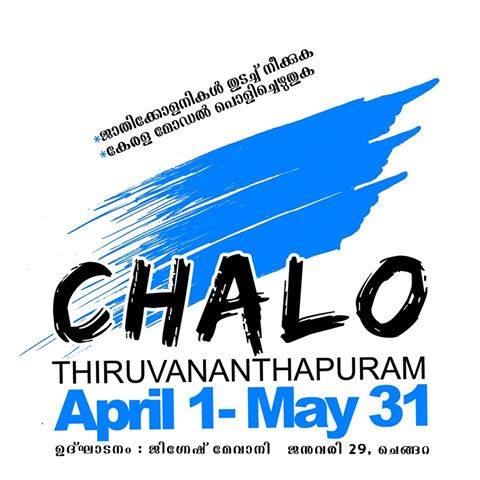Vaibhav Kharat
The first installment of a trilogy directed by Arun Matheswaran, ‘Captain Miller’, features Dhanush, Shiva Rajkumar, Nassar, Sundeep Kishan, and Nivedhithaa Sathish in key roles. Initially released in theaters, the film later became available on Amazon Prime Video. Penned by Arunraja Kamaraj and Madhan Karky, it was produced by Sathya Jyothi Films. As the movie plot begins with a scene at a Shiva temple. A tribal woman, Eesa’s mother, narrates the oral history of their tribal clan deity, Koronar, considered to be the reincarnation of Ravana during British rule in India.
The storyline follows Eesa, a villager striving for respect amidst caste discrimination. Despite his elder brother Sengolan’s rebellion against the British, Eesa seeks to join the British Indian Army. His romantic feelings for Velmathi, the niece of the royal Rajadhipathi, are unrequited, leading him to enlist, earning the nickname ‘Captain Miller’ due to British pronunciation challenges. Forced to confront moral dilemmas, Eesa grapples with shooting innocent freedom fighters, resulting in tragedy with his friend Stephen’s suicide. Eesa retaliates by killing their commander, Buller, before returning home to discover his brother’s death and facing rejection from the villagers.
Engaging in revolutionary activities against the British, Eesa reunites with Velmathi, who seeks revenge for her husband’s death by urging Eesa to kill Riley, the son of a British governor. Amidst the turmoil, the British seize a valuable gemstone with the complicity of Rajadhipathi’s minister, Kanagasabai, prompting Eesa’s intervention to retrieve it. Realizing the king’s betrayal, Eesa flees to Ceylon, only to return to defend his village against British oppression led by General Wandy. With Velmathi’s assistance, Eesa confronts the British, leading to the downfall of the royal family and the restoration of the gemstone to the temple. Despite their victory, Eesa and his comrades become targets of British retribution, as illustrated in the epilogue with the king’s daughter seeking vengeance against Velmathi and the revolutionaries.
While many analysts may interpret the film as a commentary on colonialism or a struggle against British oppression, it is important to recognize its dual narrative of resistance against both colonialism and Brahminism. ‘Captain Miller’ is a tale of assertion and defiance against hegemonic structures, highlighting the complexities of societal struggle in colonial India. In the cinematic narrative of ‘Captain Miller’, the protagonist Eesa’s journey unfolds as a profound act of resistance against the entrenched structures of Brahminism, intertwined with a poignant quest for the reclamation of identity, assertion of dignity, and preservation of heritage culture. As a student of sociology hailing from a similar background, I identify deeply with the themes of defiance and assertion portrayed in the film, which resonate with our own experiences and struggles.
Eesa’s quest for respect in the face of caste discrimination serves as a powerful indictment against the hegemony of Savarnas, echoing the sentiments of countless marginalized communities that have long been subjected to systemic oppression. His decision to join the British Indian Army, driven by aspirations for upward mobility, is emblematic of the complex dynamics of power and agency within a colonial context. However, as the narrative unfolds, Eesa’s disillusionment with the oppressive tactics employed by his colonial overlords mirrors our own collective reckoning with the enduring legacies of colonialism and exploitation. The exclusion of Eesa’s tribe from the temple, despite their integral role in its construction and the discovery of the sacred gemstone, serves as a poignant reminder of the systemic marginalization perpetuated by Brahminical structures.
This exclusion, resonant with the struggles of Dr. B.R. Ambedkar, Narayan Guru, and Periyar, who fought tirelessly for the right to worship and self-respect, underscores the enduring legacy of resistance against caste-based discrimination and religious oppression in Hinduism. The symbolism of the gemstone, an ancient relic safeguarded by Eesa’s ancestors (from Essa’s mother’s oral story in the beginning), embodies the courage and cultural heritage of his tribe, symbolizing their enduring struggle against external domination and exploitation. As Eesa and his comrades fight valiantly to reclaim the gemstone and restore it to its rightful place within the temple, they assert their agency and sovereignty, reclaiming their ancestral legacy and dignity in the face of adversity. The epilogue, with its ominous vow of vengeance from the king’s daughter, serves as a stark reminder of the ongoing struggle against Brahminical hegemony and colonial dominance, echoing the sentiments of countless marginalized communities who continue to resist and reclaim their rightful place in society.
In conclusion, ‘Captain Miller’ emerges as a powerful cinematic testament to the enduring spirit of resistance and assertion, echoing the struggles of our Bahujan icons, who fought tirelessly for social justice and equality against Bramhinism. As a student of sociology hailing from a similar background, I find solace and inspiration in the narrative of Eesa’s quest for dignity, identity, and justice, which mirrors our own ongoing struggle for identity assertion, liberation, and empowerment.
~~~
Vaibhav Kharat, is a graduate in sociology from Fergusson College, Pune, and is currently pursuing MA in Sociology from, the Center for The Study of Social Systems (CSSS ), JNU, New Delhi. He’s active in the Ambedkarite Movement at college and university campuses and has a keen interest in Anti- Caste philosophy, Pragmatism and Feminist Philosophy.
Image courtesy: the internet.










